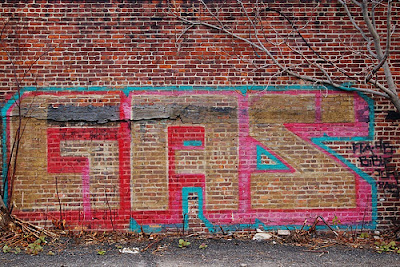On Gas, Cars and Bernanke
Courtesy of Bruce Krasting
Everyone is talking about gas this past week, and for good reason. The price at the pump has been tearing higher. According to the papers this morning the national average price for regular gas is $3.65. Unfortunately for me, the price the media is spouting has nothing to do with my cost. As of this morning, my local gas guy is charging $4.85 for premium fuel, and that’s the stuff my car uses.
I doubt the numbers being bandied about regarding prices at the pump actually reflect the real economic consequences.
I'll probably take some flack for this, but I believe it's true. The only thing that matters is the price of gas in California and New York.
The USA has evolved into a two-tier gas market. The supply of crude from Canada and the Bakken fields has created a lower cost of supply for the central portion of the country. This differential is most notable in the market spread between WTI (a futures contract that settles physical delivery in Oklahoma) and LLS (Louisiana Light Sweet Crude) – the pricing of crude for the big Gulf refineries.
These charts show the WTI and the LLS pricing over the past year.
While both crude prices have risen significantly of late, what jumps out is that the LLS pricing broke through the highs of ten-months ago, while WTI has not.
Consider this map of the country. The green area is where the Canadian crude is helping to keep prices lower. The dark red areas are those that are dependent on the high-priced, imported crude.
Gas prices are north of $5 in southern California today, but they are as low as $2.95 in Ft. Collins Colorado.
While this may make the folks in Colorado and North Dakota happy, it will crush the national economy. It doesn’t matter what happens in Co. or N.D., they have (relatively) no cars.
A few years ago, the Highway Transportation Department put out a report on registered vehicles by state. The total of all registered vehicles was 244,000,000. Of that total, 33 million were on the roads of California (13%), only 1.8 million (0.75%) were in Colorado, and a measly 700k (0.25%) were in North Dakota. The total of vehicles on the road in the states that are in red in the above map comes to 137 million. Fully 56% of all vehicles are in high cost states. Only 15 million vehicles (6% of total) are registered in the green states!
State GDP is directly correlated with vehicle registrations. The red-colored states, paying the highest prices today, represented 57% of 2010's GDP. Green states, contributed only 8% GDP.
My thoughts:
-Crude prices in Louisiana hit their highest in a year on Friday. If this level is sustained (or heaven forbid increases), the price of fuel in the red states will go up by 50 cents in the next few weeks. Forget about $4, start worrying about $5.
-California and NY will be hit the hardest. These two states represent 21% of GDP. It will be a big burden for the NY economy. For California, it could be a crushing blow. The national economy cannot expand without California growing. Cali is a very big portion of the pie.
-Given these facts, I wonder if the Administration is planning to release more oil from the Strategic Reserve. I bitched and moaned about this last July when the SPR was tapped. Following the June SPR sales, there was a multi-month drop in crude prices.
The SPR sales had little consequence; the drop in crude reflected a slowdown in global growth and an easing of concerns regarding Libya.
The Administration may look at the same charts as I did and conclude that it was the SPR sales that broke the market for a while. Folks who like to intervene in markets are biased to believe their intervention "works." This Administration would love to push down crude prices for another three months. It would take the gas story off the front page. It would help the economy from running into a wall.
This being an election year, it's possible that Obama will try an SPR sale. If gas is $5 in November, anything could happen.
If there were an SPR sale, any beneficial impact on prices would have a half-life of about 48 hours. This ain’t June 2011. If we should we see an SPR sale (low probability), buy that dip.
-The LLS crude price tracks Brent crude. (A tanker can go to Rotterdam or Louisiana, it will go to where the price is the highest.) If there is a Middle East supply disruption, it will affect Brent more than WTI. But for the red states, gas prices will track Brent.
-Greenspan remarked in July of 2010, “The economy appears to have hit an invisible wall”. Bernanke reacted a few months later with his Jackson Hole speech that brought us QE2. In the Summer of 2011 the economy hit another of those “invisible walls”. Bernanke delivered TWIST and Perpetual ZIRP. I wonder if Ben will try QE3 if the economy hits another those walls due to rising gas prices.
The thing is, if Ben tried another form of QE/LSAP the price of crude would be up $20 in a week. Bernanke is another of those who likes to intervene in markets. He also thinks it “works.” It won’t work this time; it will blow up in his face.
.







